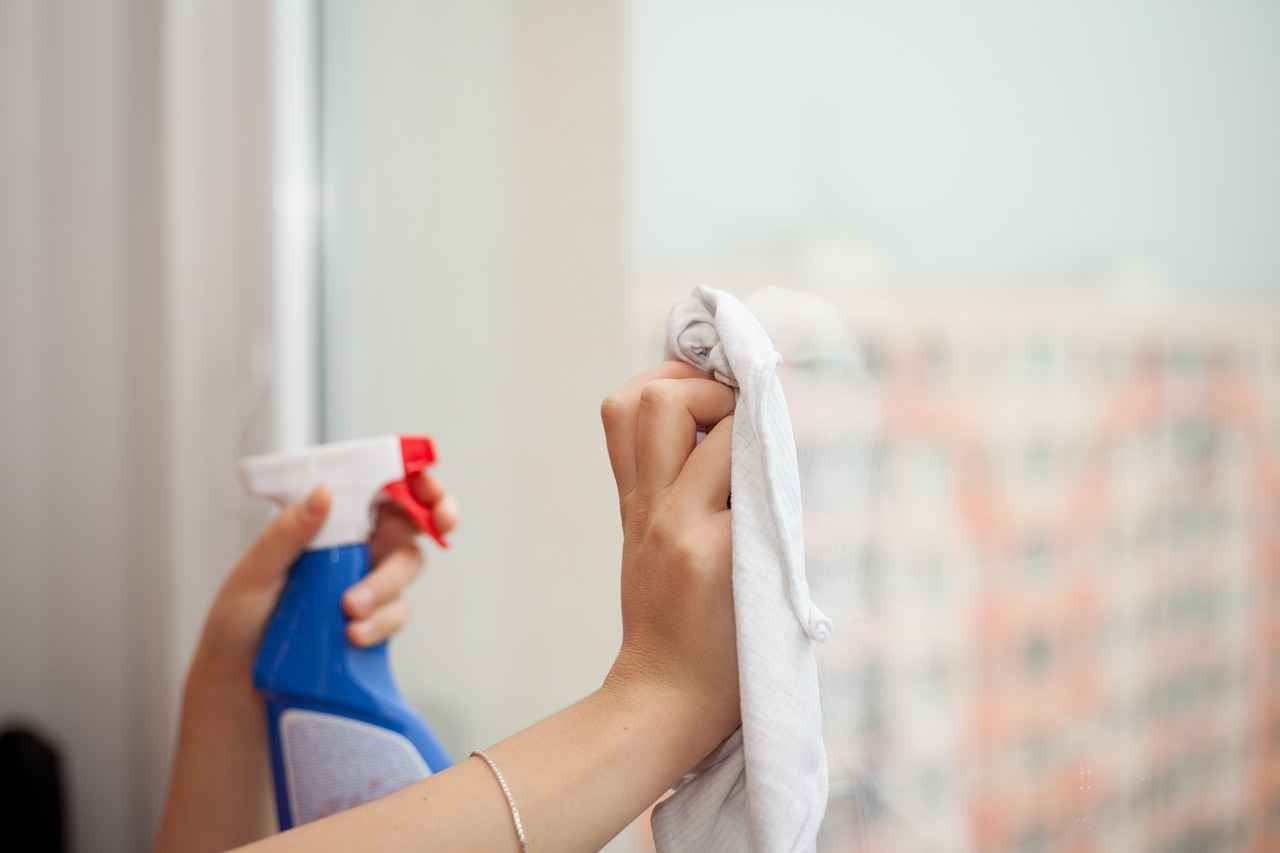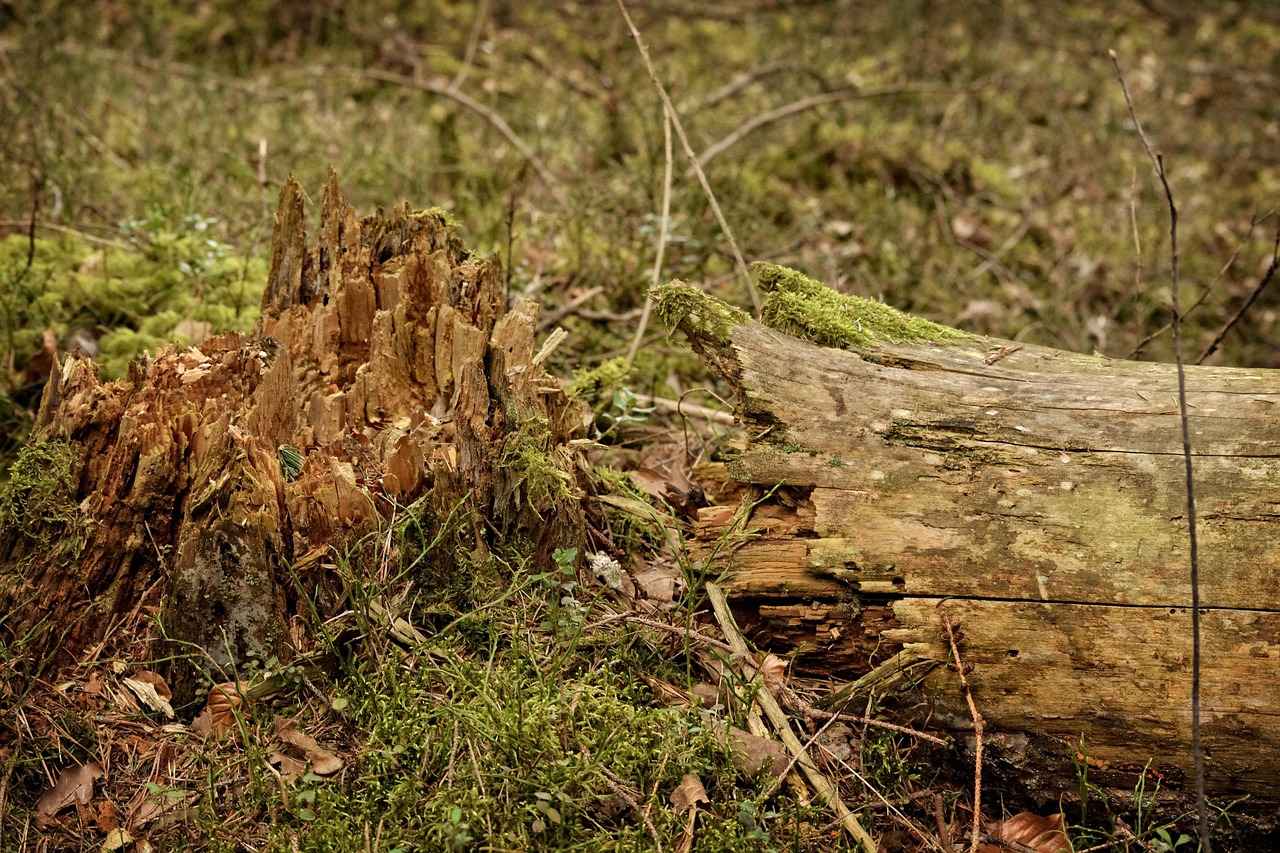This article provides practical techniques for effectively removing water stains from your car’s exterior and interior surfaces, ensuring your vehicle maintains its aesthetic appeal and value.
Understanding the origins of water stains is crucial for effective removal. Water stains typically result from mineral deposits left behind after water evaporates, often exacerbated by contaminants like bird droppings or tree sap. These stains not only mar the appearance of your vehicle but can also lead to long-term damage if not addressed promptly.
Removing water stains from car paint requires careful techniques to avoid damaging the finish. Here are some effective methods:
- Specialized Cleaners: Invest in a quality water spot remover designed for automotive finishes.
- Clay Bars: These can help lift embedded contaminants that cause stains.
- Household Items: Vinegar is a popular choice for effective stain removal.
Vinegar is a natural and effective solution for water stains. Its acidic properties help dissolve mineral deposits without harming the car’s paint when used correctly, making it a popular choice among car owners.
1. Mix equal parts vinegar and water in a spray bottle.2. Apply the solution to the stained area.3. Let it sit for a few minutes.4. Gently wipe with a soft cloth.
While vinegar is effective, it’s essential to avoid prolonged exposure to the car’s surface to prevent any potential damage. Always rinse the area with water after cleaning to neutralize the acidity.
For tougher stains, commercial water spot removers are formulated to tackle mineral deposits effectively. These products often contain specialized ingredients that enhance their stain-removing capabilities. Always follow the manufacturer’s instructions for optimal results.
Water stains on car windows can obstruct visibility and detract from the vehicle’s appearance. Using vinegar, baking soda, or commercial glass cleaners can effectively restore clarity to your windows.
Baking soda, mixed with water to form a paste, can effectively remove water stains from glass surfaces. This gentle abrasive method helps lift stains without scratching the glass.
Commercial glass cleaners are designed to cut through grime and mineral deposits. Look for products specifically labeled as effective against hard water stains for optimal results. Always use a clean microfiber cloth for the best finish.
Prevention is key to maintaining your car’s appearance. Regular washing, applying wax, and using a water-repellent treatment can help minimize the occurrence of water stains.
Frequent washing with quality car soap can prevent the buildup of contaminants that lead to water stains. Ensure that you dry your car thoroughly after washing to avoid water spots. Consider washing your car in the shade to prevent water from evaporating too quickly.
Applying a layer of wax or sealant protects the paint and makes it easier to clean off any water spots that do form. This creates a barrier that repels water and contaminants effectively, ensuring your vehicle remains in pristine condition.

What Causes Water Stains on Cars?
Understanding the origins of water stains is crucial for effective removal. Water stains on cars are primarily caused by the evaporation of water that leaves behind mineral deposits. These minerals, which include calcium and magnesium, can accumulate over time and create unsightly marks on your vehicle’s surface. Additionally, contaminants such as bird droppings, tree sap, and pollution can exacerbate the staining process, making it even more difficult to remove.
When rainwater or water from car washes dries on your vehicle, the minerals contained in the water are left behind. If the water is hard, which means it contains a high concentration of minerals, the problem can be even worse. Over time, these deposits can become embedded in the car’s paint, leading to permanent damage if not addressed promptly.
Another factor contributing to water stains is the type of surface on your car. Paint finishes that are not properly sealed or protected can be more susceptible to staining. For example, matte finishes, while trendy, may attract stains more easily than traditional glossy finishes. Furthermore, the environmental conditions in which you park your car can also play a significant role. Parking under trees or near industrial areas can expose your vehicle to additional contaminants that can worsen water stains.
To effectively combat water stains, it is essential to understand the specific causes. Here are some common contributors:
- Hard Water: Water with a high mineral content that leaves deposits when it evaporates.
- Environmental Contaminants: Substances like bird droppings, tree sap, and industrial fallout can lead to staining.
- Improper Washing Techniques: Using dirty sponges or towels can scratch the surface and trap minerals.
- Neglect: Failing to wash your car regularly can lead to a buildup of grime and stains.
Understanding these factors can help car owners take proactive measures to prevent water stains from forming in the first place. Regular washing and waxing create a protective barrier that can repel water and contaminants, reducing the likelihood of stains. Additionally, using high-quality car care products specifically designed to combat mineral deposits can be beneficial.
In conclusion, recognizing the causes of water stains is the first step towards effective removal and prevention. By staying informed and implementing proper car maintenance techniques, you can keep your vehicle looking its best and avoid the frustration of stubborn water stains.
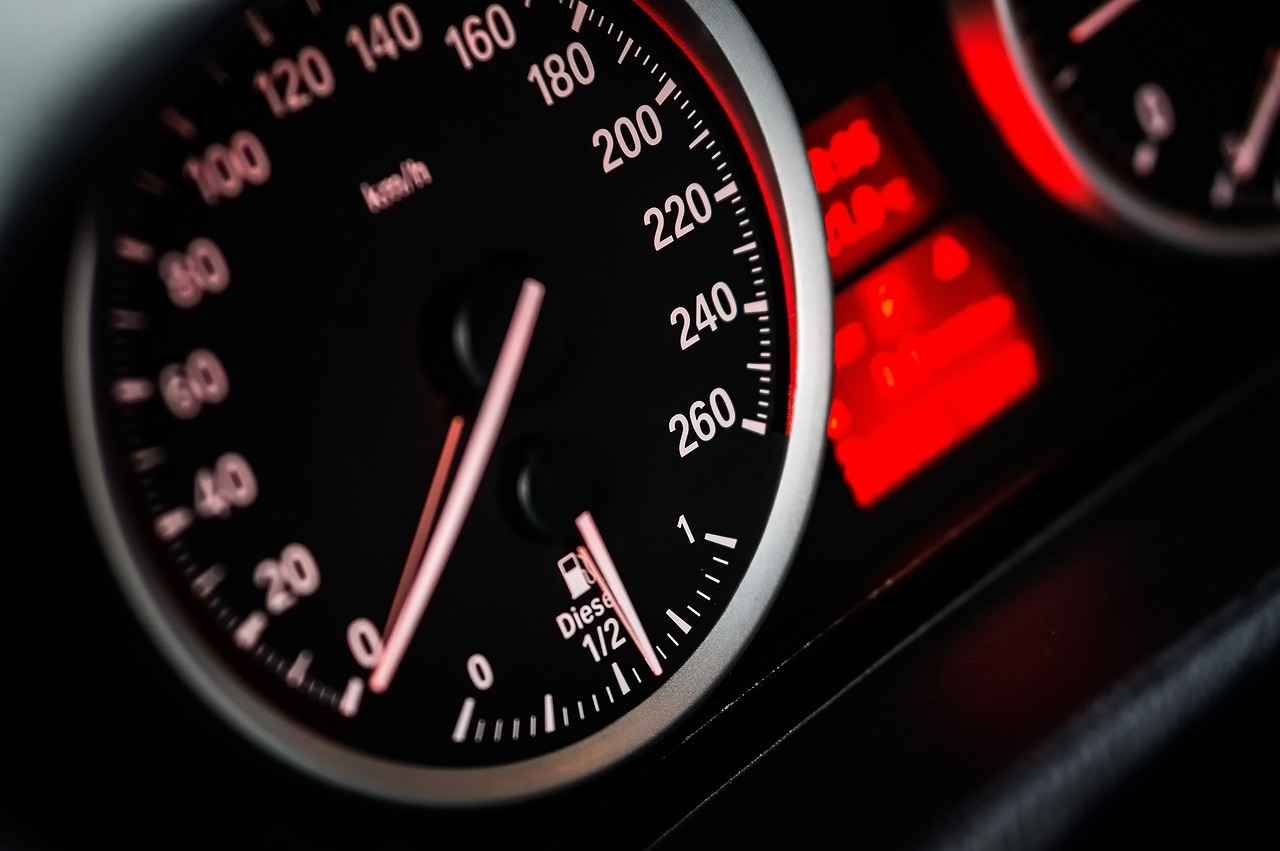
How to Remove Water Stains from Car Paint?
Water stains on car paint can be a frustrating issue for vehicle owners, as they can diminish the car’s overall appearance and value. Understanding how to effectively remove these stains is essential to maintaining your car’s aesthetic appeal. In this article, we will explore various methods to remove water stains from car paint, ensuring you can restore your vehicle’s shine without causing damage.
Removing water stains from car paint requires careful techniques to avoid damaging the finish. The stains often arise from mineral deposits left behind after water evaporates, particularly when the water contains minerals from hard water. To effectively tackle these stains, consider the following methods:
- Specialized Cleaners: These products are formulated specifically for removing water stains and are often highly effective.
- Clay Bars: Using a clay bar can help lift contaminants from the paint surface, including water stains.
- Household Items: Common household items like vinegar can also serve as effective stain removers.
Vinegar is a natural and effective solution for water stains, thanks to its acidic properties. When used correctly, vinegar can dissolve mineral deposits without harming the car’s paint. Here’s how to apply it:
1. Mix equal parts of vinegar and water in a spray bottle.2. Spray the solution onto the stained area of the paint.3. Allow it to sit for a few minutes to penetrate the stains.4. Gently wipe the area with a soft, clean cloth.
While vinegar is effective, it’s crucial to avoid prolonged exposure to the car’s surface to prevent potential damage. Always rinse the area with water after cleaning to neutralize the acidity. This step is essential to ensure that no residue remains that could harm the paint over time.
For tougher stains that vinegar may not effectively eliminate, consider using commercial water spot removers. These products are specifically designed to tackle mineral deposits and often contain specialized ingredients that enhance their stain-removing capabilities. Always follow the manufacturer’s instructions for the best results.
Prevention is key to maintaining your car’s appearance. Regular washing, applying wax, and using a water-repellent treatment can help minimize the occurrence of water stains. Here are some effective strategies:
- Regular Car Washing: Frequent washing with quality car soap can prevent the buildup of contaminants that lead to water stains. Make sure to dry the car thoroughly after washing to avoid water spots.
- Applying Wax and Sealants: A layer of wax or sealant not only protects the paint but also makes it easier to clean off any water spots that do form. This creates a barrier that effectively repels water and contaminants.
Baking soda is another effective option for removing water stains from car paint. When mixed with water to form a paste, it acts as a gentle abrasive that helps lift stains without scratching the paint. Here’s how to use it:
1. Mix baking soda with water to create a paste.2. Apply the paste to the stained areas of the paint.3. Gently rub the paste in circular motions with a soft cloth.4. Rinse thoroughly with water to remove any residue.
By following these methods and tips, you can effectively remove water stains from your car paint and keep your vehicle looking its best. Remember, regular maintenance and preventive measures are essential for long-lasting results.
Using Vinegar for Stain Removal
When it comes to maintaining the pristine look of your vehicle, water stains can be a significant nuisance. Fortunately, there are various methods to tackle this issue, and one of the most popular and effective solutions is using vinegar. This natural product is not only readily available but also safe for your car’s paint when applied correctly.
Vinegar contains acetic acid, which is effective in breaking down the mineral deposits left behind by hard water. These deposits often form unsightly stains that can diminish your car’s appearance. The acidic properties of vinegar make it an excellent choice for dissolving these minerals without causing harm to the paint, making it a favored option among car enthusiasts.
To effectively use vinegar for removing water stains, it’s essential to follow a structured approach. Here’s a simple yet effective method:
- Preparation: Gather your materials. You will need white vinegar, water, a spray bottle, and a soft microfiber cloth.
- Mix the Solution: In the spray bottle, combine equal parts of vinegar and water. This dilution helps to ensure that the vinegar is effective while minimizing any potential risk to your car’s paint.
- Application: Spray the vinegar solution directly onto the stained area of the car. Allow it to sit for about 5 minutes. This waiting period allows the vinegar to penetrate and dissolve the mineral deposits.
- Wipe Clean: After letting the solution sit, gently wipe the area with a soft microfiber cloth. Use a circular motion to lift the stains effectively.
- Rinse: Finally, rinse the area with clean water to remove any remaining vinegar residue. This step is crucial to neutralize the acidity and prevent any potential long-term damage.
While vinegar is a powerful and natural cleaner, there are some precautions to keep in mind:
- Avoid Prolonged Exposure: Do not let vinegar sit on the surface for too long, as extended contact can potentially harm the paint.
- Test First: Always perform a spot test in an inconspicuous area to ensure that the vinegar does not react negatively with your car’s finish.
- Use in Moderation: While vinegar is effective, it should not be your only method of cleaning. Regular maintenance with appropriate car care products is essential.
Yes! In addition to car paint, vinegar can also be used on other surfaces of your vehicle:
- Windows: Vinegar is excellent for cleaning water stains off glass surfaces, enhancing visibility.
- Wheels: It can also help remove mineral deposits from alloy wheels, making them shine.
In summary, vinegar is a versatile and effective solution for removing water stains from your car. By following the proper application techniques and precautions, you can maintain your vehicle’s appearance and protect its value. Regular cleaning and maintenance will ensure that your car remains in top condition, free from unsightly water stains.
Step-by-Step Vinegar Application
When it comes to maintaining the pristine appearance of your car, removing water stains effectively is essential. One of the most popular and natural methods for tackling these pesky marks is using vinegar. Below is a detailed guide on how to apply this method safely and effectively.
Using vinegar to remove water stains from your car is a simple yet effective process. Follow these steps for the best results:
- Gather Your Materials: You will need white vinegar, water, a clean spray bottle, and a soft cloth or microfiber towel.
- Mix the Solution: In your spray bottle, mix equal parts of vinegar and water. This combination will create a solution that is strong enough to dissolve mineral deposits while being gentle on your car’s surface.
- Apply the Solution: Spray the vinegar solution directly onto the stained area of your car. Ensure that the surface is cool to the touch to prevent any potential damage.
- Let It Sit: Allow the solution to sit for about 5 to 10 minutes. This waiting period is crucial as it gives the vinegar time to break down the mineral deposits.
- Wipe the Area: After letting it sit, take your soft cloth and gently wipe the stained area in a circular motion. This technique helps lift the stain without scratching the paint.
- Rinse Thoroughly: Once the stain is removed, rinse the area with clean water to neutralize the acidity of the vinegar. This step is important to prevent any potential damage to the paint over time.
- Dry the Surface: Finally, use a dry microfiber towel to wipe down the area, ensuring no water spots are left behind.
While vinegar is a fantastic natural cleaner, it’s important to take certain precautions:
- Avoid Prolonged Exposure: Do not let the vinegar solution sit for too long, as excessive acidity can damage the car’s paint.
- Test on a Small Area: Before applying the solution to larger areas, test it on an inconspicuous spot to ensure it does not adversely affect the paint.
- Use in Moderation: While vinegar is effective, using it too frequently can lead to dullness in the paint finish. Consider alternating with other cleaning methods.
By following these steps and precautions, you can effectively use vinegar to remove water stains from your car, keeping it looking its best. This method not only saves you money but also minimizes the use of harsh chemicals, making it an environmentally friendly option.
Incorporating regular maintenance and cleaning practices will help you avoid stubborn stains in the future, ensuring your vehicle remains in top condition.
Precautions When Using Vinegar
When it comes to maintaining the aesthetic appeal of your car, removing water stains is a crucial aspect. One popular method involves the use of vinegar, a natural cleaning agent. However, while vinegar can be highly effective, it’s important to use it with caution to avoid any unintended damage to your vehicle’s surface.
Vinegar is known for its acidic properties, which can effectively dissolve mineral deposits that cause water stains. Nevertheless, if left on the car’s surface for too long, vinegar can lead to etching or dulling of the paint. This is particularly true for cars with a clear coat finish, where prolonged exposure can compromise the protective layer.
- Mix Properly: Always dilute vinegar with water in a 1:1 ratio before application. This reduces its acidity while still providing effective cleaning.
- Test First: Before applying the solution to a visible area, test it on a small, inconspicuous section of the car to ensure it does not cause damage.
- Limit Exposure Time: Apply the vinegar solution and allow it to sit for no more than 5 minutes. This minimizes the risk of damage while still allowing the solution to work effectively.
- Rinse Thoroughly: After cleaning with vinegar, it is essential to rinse the area with plenty of water. This step neutralizes the acidity and removes any residual vinegar, preventing potential harm to the paint.
If you are concerned about using vinegar, there are several alternative methods to consider:
- Commercial Cleaners: Invest in a specialized water stain remover designed for automotive use. These products are formulated to tackle tough stains without damaging the paint.
- Baking Soda Paste: Create a paste using baking soda and water. This gentle abrasive can help lift stains without scratching the surface.
- Clay Bars: Utilize a clay bar treatment to remove embedded contaminants from the paint surface, effectively eliminating water stains.
Once the water stains have been removed, it’s crucial to maintain your car’s appearance. Regular washing and waxing can create a protective barrier against future stains. Here are some tips:
- Wash Regularly: Frequent washing with quality car soap prevents the buildup of contaminants that lead to water stains.
- Apply Wax: A layer of wax not only enhances your car’s shine but also makes it easier to clean off any stains that do form.
- Use Water-Repellent Treatments: These treatments can help repel water and minimize the occurrence of stains in the future.
In conclusion, while vinegar is a popular choice for removing water stains due to its effectiveness and natural properties, it is important to use it with caution. By following the recommended precautions and considering alternative methods, you can maintain your car’s appearance without risking damage to its surfaces.
Using Commercial Water Spot Removers
When it comes to maintaining the pristine appearance of your vehicle, dealing with water spots can be a frustrating challenge. While home remedies like vinegar and baking soda can be effective for minor stains, is often the best solution for tougher stains.
Commercial water spot removers are specifically designed to tackle the stubborn mineral deposits that can accumulate on your car’s surface. These products often contain specialized ingredients that enhance their stain-removing capabilities, making them more effective than typical household solutions. But what exactly makes these products so effective?
Many commercial water spot removers include acids such as citric acid or phosphoric acid, which help to dissolve mineral deposits without damaging the car’s finish. Additionally, some products feature surfactants that help lift stains away from the surface, making it easier to wipe them off. Here’s a closer look at the benefits:
- Efficient Stain Removal: Formulated to penetrate and dissolve tough stains.
- Protective Agents: Some products also include wax or sealant properties that provide a protective layer after cleaning.
- Ease of Use: Most commercial removers come in spray bottles, making application quick and straightforward.
Using these products is generally straightforward, but following the manufacturer’s instructions is crucial for optimal results. Here’s a simple step-by-step guide:
- Choose the Right Product: Look for a water spot remover specifically designed for automotive use.
- Preparation: Wash your car thoroughly to remove any loose dirt or debris.
- Application: Spray the product directly onto the stained area, ensuring even coverage.
- Let It Sit: Allow the product to work for the recommended time, usually a few minutes.
- Wipe Clean: Use a soft microfiber cloth to gently wipe away the stains.
- Rinse: Rinse the area with water to remove any residue from the cleaner.
While commercial water spot removers are effective, it’s essential to take some precautions:
- Test First: Always test the product on a small, inconspicuous area to ensure compatibility with your car’s finish.
- Avoid Direct Sunlight: Apply the product in a shaded area to prevent it from drying too quickly.
- Follow Instructions: Adhere to the manufacturer’s guidelines to avoid damaging your vehicle.
You can find commercial water spot removers at most auto parts stores, big-box retailers, or online. Popular brands often receive positive reviews for their effectiveness, so be sure to check customer feedback before making a purchase.
In summary, commercial water spot removers provide a highly effective solution for tackling tough stains caused by mineral deposits. With the right product and proper application, you can restore your vehicle’s appearance and protect its value. Whether you’re a car enthusiast or just looking to maintain your vehicle, investing in a quality water spot remover is a smart choice.
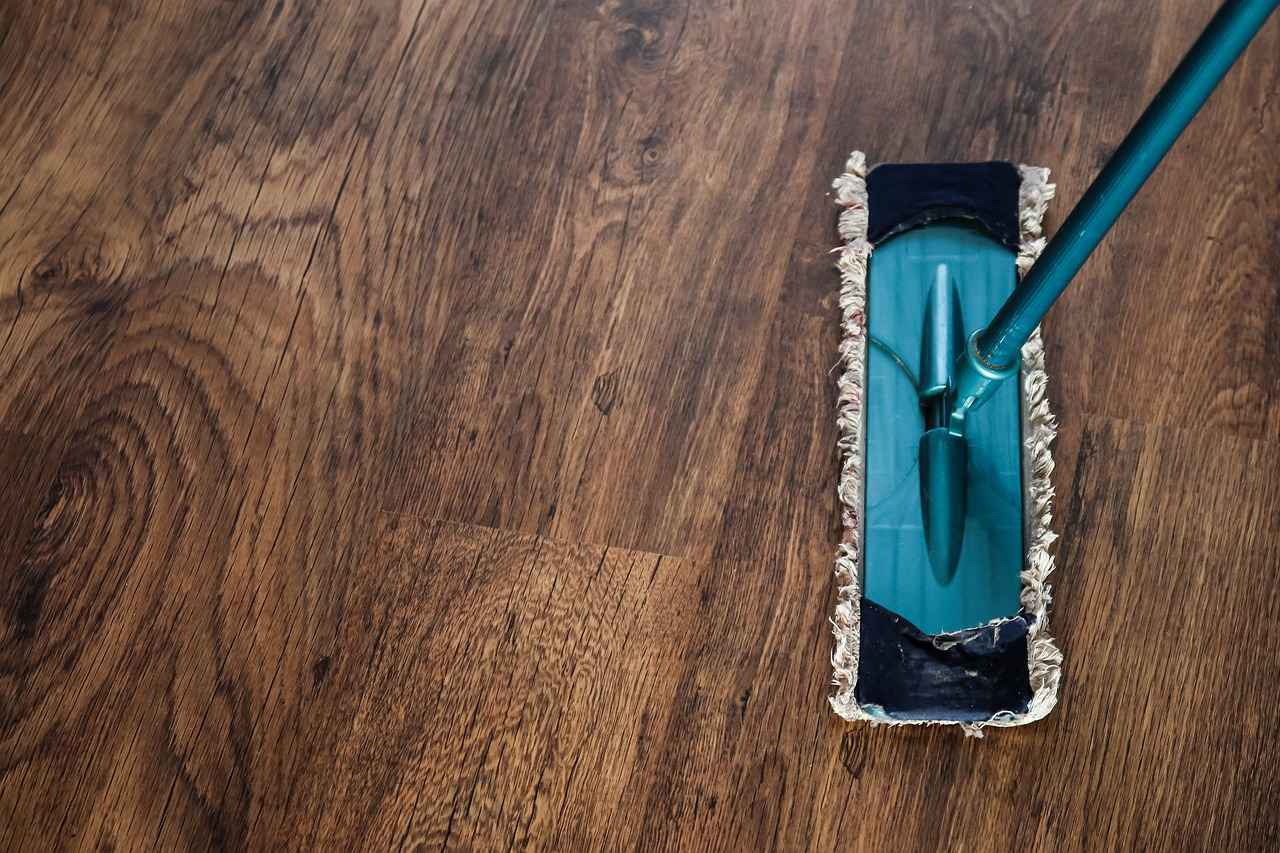
How to Remove Water Stains from Car Windows?
Water stains on car windows can be a frustrating issue for vehicle owners. Not only do they obstruct visibility, but they can also detract from the overall aesthetic appeal of your vehicle. Fortunately, there are several effective methods to restore clarity to your windows and keep them looking pristine.
Water stains are typically caused by mineral deposits left behind when water evaporates. These deposits can be exacerbated by environmental factors, such as acid rain, bird droppings, or tree sap. Understanding the origins of these stains is essential for effective removal.
There are various methods to tackle water stains on car windows. Common solutions include using vinegar, baking soda, or commercial glass cleaners. Each method has its benefits and can effectively restore clarity.
Vinegar is a popular choice for removing water stains due to its natural acidity. This property allows it to dissolve mineral deposits without damaging the glass surface when used properly.
- Mix equal parts of vinegar and water in a spray bottle.
- Spray the solution generously on the stained area.
- Let it sit for a few minutes to allow the vinegar to break down the deposits.
- Wipe the area gently with a soft cloth or microfiber towel.
- Rinse the window with clean water to neutralize the acidity.
While vinegar is an effective cleaner, it’s important to avoid prolonged exposure to the glass surface to prevent any potential damage. Always rinse thoroughly with water after cleaning to ensure that no residue remains.
Baking soda is another excellent option for removing water stains. When mixed with water to form a paste, it acts as a gentle abrasive that can lift stains without scratching the glass.
- Combine baking soda with a small amount of water to create a paste.
- Apply the paste to the stained areas of the window.
- Gently scrub with a soft cloth or sponge in circular motions.
- Rinse thoroughly with clean water.
If the stains persist, consider using a commercial glass cleaner specifically designed to combat hard water stains. Look for products that contain specialized ingredients for enhanced stain removal.
Commercial cleaners often provide a more powerful solution for tough stains. They are formulated to cut through grime and mineral deposits effectively, making them a reliable choice for car owners.
Preventing water stains from forming in the first place is crucial for maintaining the clarity of your car windows. Regular maintenance and protective measures can significantly reduce the likelihood of stains.
Frequent washing with quality car soap can help prevent the buildup of contaminants that lead to water stains. Make sure to dry your car thoroughly after washing to avoid water spots.
Consider applying a water-repellent treatment to your windows. These coatings create a barrier that repels water and makes it easier to clean off any spots that may form.
By following these methods and tips, you can effectively remove and prevent water stains on your car windows, ensuring clear visibility and maintaining your vehicle’s overall appearance.
Cleaning Windows with Baking Soda
is a popular and effective method for removing stubborn water stains from glass surfaces. Many car owners struggle with unsightly marks left behind by hard water, which can obscure visibility and detract from the vehicle’s overall appearance. Fortunately, baking soda offers a gentle yet effective solution that is safe for glass.
When mixed with water to form a paste, baking soda becomes a mild abrasive that can effectively lift stains without scratching the glass. This method is particularly advantageous because baking soda is a natural product, making it a safer alternative to harsh chemical cleaners.
There are several reasons to opt for baking soda when tackling water stains:
- Non-Toxic: Baking soda is safe for both the environment and your health, making it an ideal choice for those concerned about chemical exposure.
- Cost-Effective: This common household item is inexpensive and readily available, allowing you to clean your windows without breaking the bank.
- Versatile: In addition to removing water stains, baking soda can be used for various cleaning tasks around the home, making it a valuable addition to your cleaning arsenal.
To effectively use baking soda for cleaning your windows, follow these simple steps:
- Gather Your Materials: You will need baking soda, water, a small bowl, a soft cloth or sponge, and a spray bottle filled with clean water.
- Mix the Paste: In a small bowl, combine three parts baking soda with one part water. Mix until you achieve a thick, spreadable paste.
- Apply the Paste: Using a soft cloth or sponge, apply the baking soda paste directly onto the stained areas of your windows.
Once the paste is applied, follow these guidelines for optimal results:
- Let it Sit: Allow the paste to sit on the stains for about 10-15 minutes. This waiting period gives the baking soda time to break down the mineral deposits.
- Gently Scrub: After the paste has had time to work, use a soft cloth or sponge to gently scrub the stained area in circular motions. Avoid using excessive force to prevent scratching the glass.
- Rinse Thoroughly: After scrubbing, spray clean water onto the window to rinse away the baking soda paste. Ensure that all residues are removed to avoid streaking.
- Dry the Surface: Use a clean, dry microfiber cloth to wipe the window dry. This step will help prevent new water stains from forming.
While cleaning windows with baking soda is generally safe, consider the following precautions:
- Test First: If you are unsure about the glass surface, test the paste on a small, inconspicuous area first.
- Avoid Excessive Scrubbing: Be gentle when scrubbing, as aggressive cleaning can lead to scratches.
- Store Properly: Keep any leftover baking soda paste in a sealed container to maintain its effectiveness for future use.
In conclusion, using baking soda to clean windows is a simple, effective, and environmentally friendly method for removing water stains. By following the steps outlined above, you can restore clarity to your car’s windows and enhance its overall appearance.
Using Glass Cleaner for Stain Removal
When it comes to maintaining the clarity and appearance of your car windows, using a quality glass cleaner is essential. These specialized products are formulated to effectively cut through grime and mineral deposits that can accumulate over time. But what should you look for in a glass cleaner, and how can you ensure optimal results?
Commercial glass cleaners are designed with specific ingredients that target tough stains, including those caused by hard water. Hard water stains occur when water evaporates, leaving behind mineral deposits such as calcium and magnesium. Therefore, when selecting a glass cleaner, it’s crucial to choose one that is specifically labeled as effective against hard water stains for the best outcome.
- Ammonia: This powerful ingredient helps break down tough grime and mineral deposits.
- Surfactants: These help lift dirt and stains from the glass surface.
- Alcohol: Often included for its quick-drying properties, reducing streaks.
Using glass cleaner properly is just as important as the product itself. Here’s a simple, effective method:
- Start by selecting a cool, shaded area to prevent the cleaner from drying too quickly.
- Shake the glass cleaner bottle well before use.
- Spray the cleaner directly onto the glass surface, focusing on stained areas.
- Use a microfiber cloth or a clean, soft paper towel to wipe the surface in a circular motion.
- For stubborn stains, allow the cleaner to sit for a minute before wiping.
While some car owners may consider using homemade solutions like vinegar or baking soda, commercial glass cleaners offer several advantages:
- Formulated for Safety: Many commercial cleaners are designed to be safe for automotive glass, ensuring no damage to tints or coatings.
- Enhanced Cleaning Power: The specific formulations in commercial products can outperform DIY solutions, especially on tough stains.
- Convenience: Ready-to-use products save time and effort compared to mixing and applying homemade solutions.
After using a glass cleaner, consider these tips to keep your windows looking pristine:
- Use a Clean Cloth: Always use a clean microfiber cloth to avoid transferring dirt back onto the glass.
- Work in Sections: Clean one section at a time to ensure thorough cleaning and prevent streaks.
- Final Wipe: After cleaning, give the glass a final wipe with a dry cloth for a crystal-clear finish.
In summary, using a commercial glass cleaner specifically designed to combat hard water stains can significantly improve the appearance of your car’s windows. By understanding the key ingredients, applying the cleaner correctly, and following maintenance tips, you can ensure your car windows remain clear and streak-free, enhancing both visibility and aesthetic appeal.
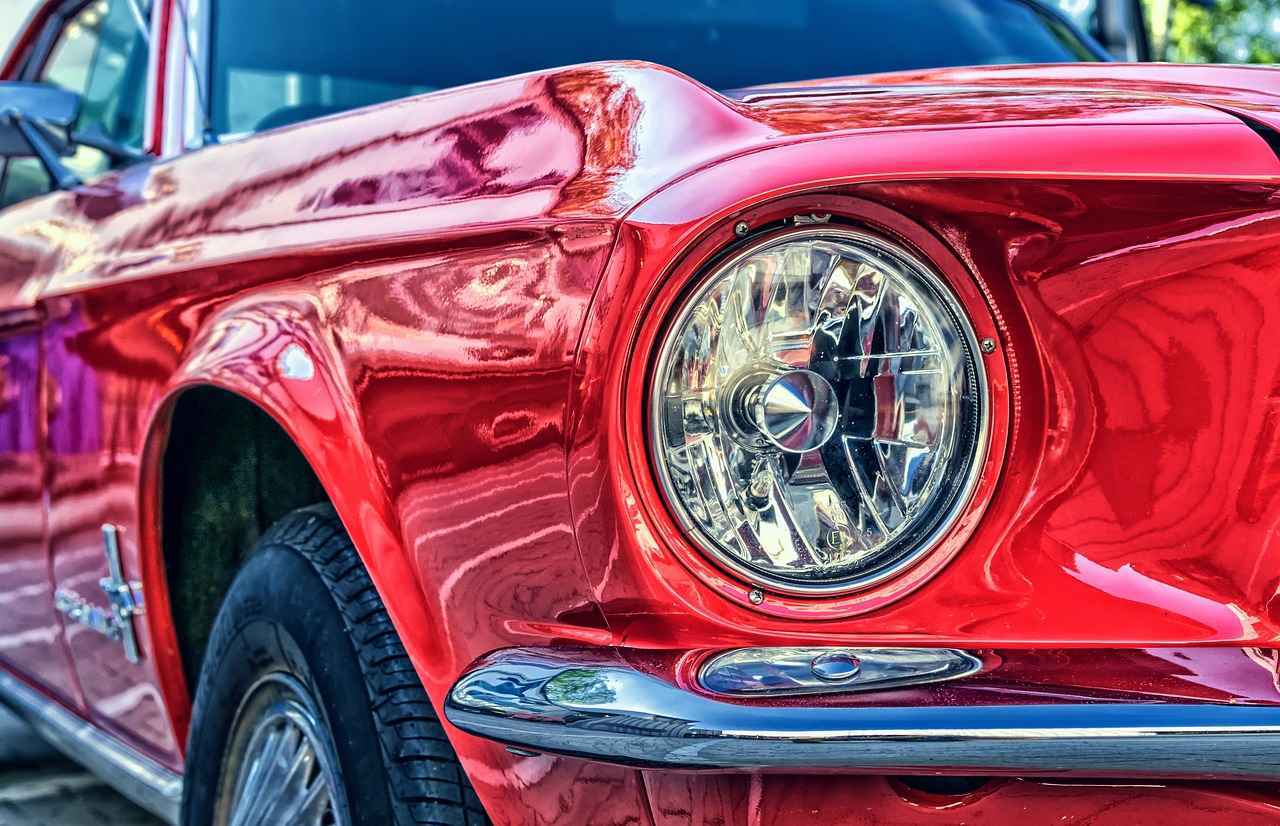
Preventing Future Water Stains on Your Car
Maintaining the appearance of your car is essential not only for aesthetic reasons but also for preserving its value. One of the most common issues car owners face is the formation of water stains. These stains can detract from your vehicle’s shine and overall appeal. Fortunately, prevention is key to minimizing the occurrence of these unsightly marks. In this section, we will explore effective strategies to keep your car looking its best.
Understanding the importance of prevention can save you time and money in the long run. Water stains are often caused by mineral deposits left behind when water evaporates. These deposits can be exacerbated by environmental factors such as acid rain, bird droppings, and tree sap. By taking proactive measures, you can significantly reduce the likelihood of these contaminants causing damage to your car’s exterior.
One of the simplest yet most effective ways to prevent water stains is through regular washing. Here are some tips:
- Choose the right soap: Use a high-quality car wash soap that is designed to remove dirt without stripping wax or sealants.
- Wash in the shade: Washing your car in direct sunlight can cause water to evaporate too quickly, leading to stains.
- Dry thoroughly: Always dry your car with a microfiber towel after washing to remove any lingering water droplets.
Applying a layer of wax or a paint sealant is crucial for protecting your car’s finish. These products create a barrier that repels water and contaminants. Here’s how to effectively apply wax:
- Choose the right product: Select a wax that suits your car’s finish, whether it’s paste, liquid, or spray.
- Apply in small sections: Work on one section at a time, applying a thin layer and allowing it to haze before buffing it off.
- Reapply regularly: Depending on the product, reapply every few months to maintain optimal protection.
In addition to wax, consider using water-repellent treatments for added protection. These treatments can be applied to both the paint and glass surfaces of your car, helping to create a hydrophobic layer that causes water to bead up and roll off. Here’s how to use them:
- Clean the surface: Ensure the surface is clean and free from contaminants before application.
- Follow instructions: Each product will have specific application instructions; be sure to follow them closely for best results.
Regularly inspect your car for any signs of water stains or damage. Early detection can make it easier to address issues before they become more severe. Pay attention to:
- Paint condition: Look for dull spots or discoloration that may indicate water stains.
- Glass clarity: Ensure your windows are free from streaks and stains that can obstruct visibility.
By implementing these preventive measures, you can significantly reduce the occurrence of water stains on your car. Regular washing, applying wax and sealants, and utilizing water-repellent treatments are all essential steps in maintaining your vehicle’s appearance. Taking care of your car not only enhances its aesthetic appeal but also preserves its value over time.
Regular Car Washing Techniques
Maintaining the pristine appearance of your vehicle is essential not only for aesthetic reasons but also for preserving its value. One of the most effective ways to achieve this is through regular car washing. This practice can significantly reduce the buildup of contaminants that lead to unsightly water stains. In this section, we will delve into the best practices for washing your car to keep it looking its best.
Frequent washing is crucial for several reasons:
- Prevention of Contaminant Buildup: Dirt, dust, and environmental pollutants can accumulate on your car’s surface, leading to potential damage over time.
- Protection Against Water Stains: Regular cleaning helps prevent the formation of water stains caused by mineral deposits left behind after evaporation.
- Enhanced Aesthetic Appeal: A clean car not only looks better but also reflects your attention to detail and care for your vehicle.
Selecting a quality car soap is essential for effective washing. Opt for products specifically designed for automotive use, as they are formulated to be gentle on your vehicle’s finish while effectively removing grime. Avoid using household detergents, as they can strip wax and damage paint.
Follow these steps for an effective wash:
- Gather Your Supplies: You’ll need a bucket, car soap, a wash mitt or sponge, a hose with a spray nozzle, and microfiber towels for drying.
- Rinse the Car: Start by rinsing the entire vehicle with water to remove loose dirt and debris.
- Wash from Top to Bottom: Using your wash mitt, start washing the top of the car and work your way down. This method prevents dirt from being dragged across the paint surface.
- Rinse Frequently: Rinse the mitt often to avoid scratching the paint with trapped dirt.
- Final Rinse: After washing, give the car a thorough rinse to remove all soap residue.
- Drying: Use microfiber towels to dry the car completely. Pay special attention to areas where water tends to collect, such as door jambs and mirrors.
To prevent water spots, it is crucial to dry your car thoroughly after washing. Here are some tips:
- Use Quality Microfiber Towels: These towels are highly absorbent and gentle on your car’s finish, minimizing the risk of scratches.
- Work in Sections: Dry one section at a time to ensure thoroughness and prevent water from drying on the surface.
- Avoid Direct Sunlight: Washing and drying your car in direct sunlight can cause water to evaporate too quickly, leading to spots.
In addition to regular washing, consider these practices:
- Wax Your Car: Applying a layer of wax every few months provides a protective barrier against contaminants and makes future cleaning easier.
- Use a Water-Repellent Treatment: Products designed to repel water can help keep your car cleaner for longer and reduce the likelihood of stains.
By adopting these , you can maintain your vehicle’s appearance and protect it from the damaging effects of contaminants and water stains. A little effort goes a long way in ensuring that your car remains a source of pride and enjoyment.
Applying Wax and Sealants
is an essential step in car maintenance that not only enhances the vehicle’s appearance but also provides significant protection against environmental elements. When you apply a layer of wax or sealant, you create a robust barrier that serves multiple purposes, significantly improving the longevity of your car’s paint job.
One of the primary benefits of using wax or sealants is their ability to protect the paint. Over time, a car’s exterior is subjected to various harmful substances, including UV rays, bird droppings, tree sap, and road grime. These contaminants can lead to corrosion and fading of the paint. By applying a protective layer, you can minimize the risk of damage and maintain the car’s aesthetic appeal.
Moreover, wax and sealants make it easier to clean off water spots that may form after washing your vehicle. Water spots are typically caused by mineral deposits left behind when water evaporates. When your car is protected with wax or sealant, these spots are less likely to adhere strongly to the surface, allowing for easier removal. This not only saves time during car maintenance but also helps keep the paint in pristine condition.
Additionally, the hydrophobic properties of wax and sealants effectively repel water. This means that when it rains or when the car is washed, water beads up and rolls off the surface rather than settling on it. This characteristic significantly reduces the chances of water stains forming, which can be particularly troublesome for car owners.
When choosing between wax and sealants, it’s essential to understand the differences. Wax is typically made from natural carnauba wax and provides a warm, deep shine. It is relatively easy to apply and offers short-term protection (usually lasting a few weeks to a couple of months). On the other hand, sealants are synthetic products that tend to last longer (up to six months or more) and provide a more durable layer of protection against environmental factors.
To apply wax or sealant effectively:
- Start with a clean and dry car surface to ensure optimal adhesion.
- Use a soft applicator pad to apply a thin layer evenly across the surface.
- Allow the product to cure as per the manufacturer’s instructions before buffing it off with a clean microfiber cloth.
- For best results, consider applying multiple layers, especially when using sealants.
It’s also worth noting that regular maintenance enhances the effectiveness of wax and sealants. Frequent washing and occasional reapplication will help maintain the protective barrier, ensuring your car remains shielded from the elements and looks its best.
In summary, applying a layer of wax or sealant is a simple yet highly effective way to protect your car’s paint. This practice not only enhances the visual appeal of your vehicle but also extends its life by creating a barrier that repels water and contaminants. By investing time in this maintenance step, you can enjoy a cleaner, shinier car and reduce the effort needed for ongoing upkeep.
Frequently Asked Questions
- What are the common causes of water stains on my car?
Water stains are usually caused by mineral deposits left behind when water evaporates. This can be aggravated by contaminants like bird droppings or tree sap, which can make those stains even more stubborn.
- Can I use vinegar to remove water stains from my car?
Absolutely! Vinegar is a natural and effective solution for removing water stains. Just mix equal parts of vinegar and water, apply it to the stained area, and gently wipe it off. Just remember to rinse the area afterward to neutralize the acidity.
- How can I prevent future water stains on my car?
Prevention is key! Regularly wash your car with quality soap, apply a layer of wax, and consider using a water-repellent treatment. This will help minimize the occurrence of water stains and keep your car looking sharp.
- Are commercial water spot removers worth it?
Yes, for tougher stains, commercial water spot removers can be very effective. They are specially formulated to tackle mineral deposits and can save you time and effort, especially if you’re dealing with stubborn spots.

